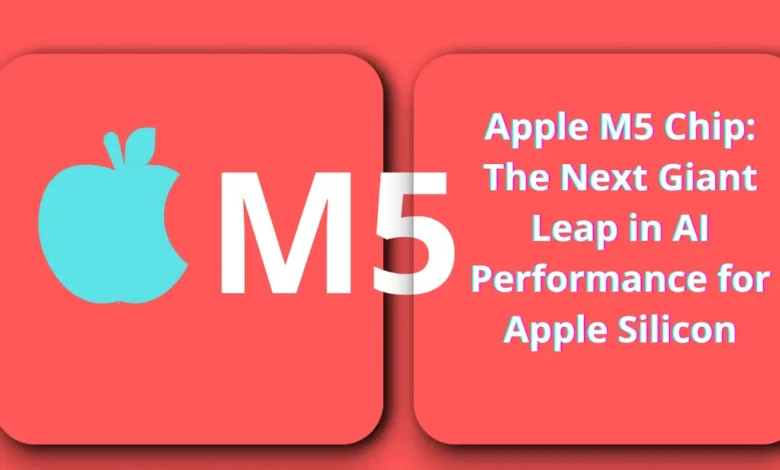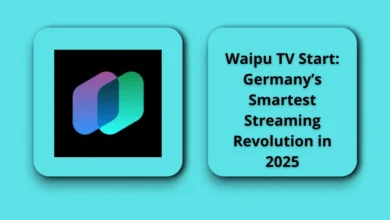Apple M5 Chip: The Next Giant Leap in AI Performance for Apple Silicon

Apple M5 Chip redefines the limits of on-device intelligence, marking a new chapter in Apple’s pursuit of self-sufficient, energy-efficient, and ultra-fast silicon.
table of contents
Apple M5 Chip: A Revolution in On-Device Artificial Intelligence
Apple’s new M5 chip is more than just another generational upgrade — it’s a statement about the company’s long-term AI ambitions. The M5 delivers a massive boost in neural processing power, energy efficiency, and real-time computation for generative AI, pushing Apple ahead in the race for AI-driven hardware performance.
At its core, the M5 features an entirely redesigned Neural Engine that’s five times faster than the M4, allowing for advanced on-device AI applications such as intelligent photo editing, language modeling, real-time translation, and adaptive user experiences without relying on the cloud.
This shift represents Apple’s deep commitment to privacy-centered AI — processing data locally while maintaining powerful generative capabilities.
How 2025 Is Redefining Smartphone Innovation
The Architecture Behind the Apple M5 Chip
The M5 chip introduces a 3-nanometer architecture, delivering up to 30% more performance per watt compared to its predecessor. Apple’s engineering teams reimagined the chip layout to optimize machine learning workloads, neural computation, and GPU acceleration simultaneously.
The chip integrates:
- A 12-core CPU with hybrid performance and efficiency cores.
- A next-gen 40-core GPU designed for real-time rendering and advanced simulations.
- A dedicated AI coprocessor capable of handling 80 trillion operations per second (TOPS).
These improvements ensure that Apple’s upcoming MacBook Pro, iMac, and possibly iPad Pro models equipped with M5 will run AI-powered applications natively at unprecedented speeds.
Apple’s Strategic Focus on Generative AI
The M5 marks a turning point for Apple, which has been more reserved in its public AI efforts compared to rivals like Google and NVIDIA. However, the company is now integrating AI across its ecosystem through features such as:
- Apple Intelligence — the new AI framework embedded across iOS, macOS, and iPadOS.
- Enhanced Siri with contextual understanding and multi-step reasoning.
- Creative AI tools for developers and content creators using Metal and CoreML.
With the M5, Apple positions itself as the first company to bring on-device generative AI to the mass market — a move that strengthens its privacy-first brand identity while giving users real-time AI capabilities without internet dependency.
Market Impact and Industry Response
The M5’s release has sent ripples across the semiconductor industry. Competitors like Qualcomm and Intel are now racing to match Apple’s efficiency and AI throughput. The M5’s benchmark scores show it outperforming even NVIDIA’s mid-range AI processors in specific inference tasks — a major achievement for a consumer-grade chip.
Investors view the M5 as a strategic cornerstone for Apple’s future in mixed reality and edge AI computing. Its architecture lays the foundation for the Vision Pro 2, upcoming MacBooks, and possibly a new generation of AI-first iPhones.
The Future of Apple Silicon
The M5 isn’t just about speed — it’s about redefining how AI interacts with users. Apple envisions devices that learn, predict, and adapt seamlessly, creating a more human-like relationship between technology and its users.
Future iterations of Apple Silicon are expected to bring quantum-inspired AI acceleration, deeper integration with iCloud-based federated learning, and even more specialized cores for natural language and computer vision.
Apple’s focus remains clear: make intelligence personal, private, and powerful.
Conclusion
The Apple M5 chip is a technological milestone, fusing raw computing power with on-device AI mastery. It signals a new phase where Apple is no longer following AI trends — it’s setting them. With its balance of efficiency, privacy, and computational strength, the M5 cements Apple’s dominance in the silicon revolution and redefines what users can expect from their devices in 2025 and beyond.
FAQs
1. What makes the Apple M5 chip unique?
The M5 introduces an advanced Neural Engine capable of 80 trillion operations per second, enabling faster and more secure on-device AI processing.
2. Will the M5 chip appear in all new Apple devices?
Initially, it’s expected in the 2025 MacBook Pro and iMac models, with future iPhones and iPads adopting scaled-down versions.
3. How does M5 improve AI performance compared to M4?
The M5 offers nearly five times faster AI inference and 30% better energy efficiency than the M4, allowing seamless generative AI functions locally.
4. Is the M5 chip designed for developers?
Yes. Apple has enhanced its development frameworks like CoreML and Metal to fully utilize M5’s AI acceleration capabilities.
5. What does this mean for users?
Users will experience smarter, faster, and more intuitive devices capable of real-time AI-driven personalization and creativity.
Discover more from Feenanoor
Subscribe to get the latest posts sent to your email.









